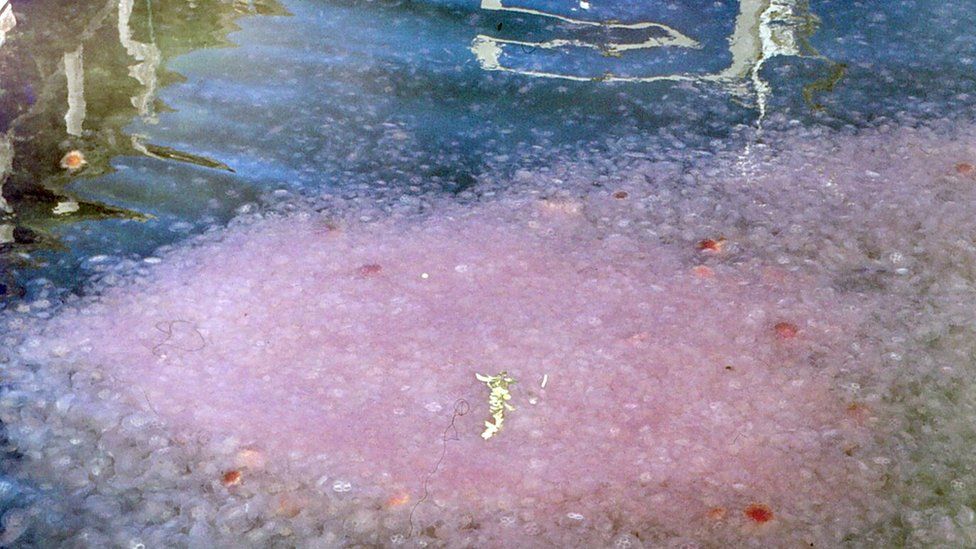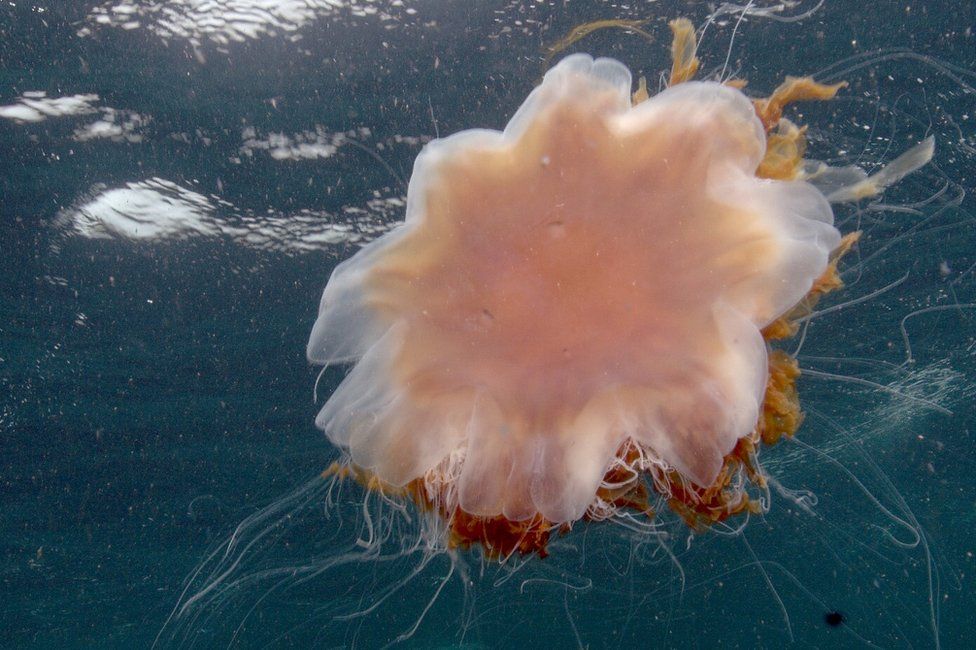According to the Met Office, the global sea surface temperatures for the months of April and May were the highest on record for those calendar months in a series dating back to 1850.
The situation is made even more apparent when you consider regional examples.
In May, the North Atlantic experienced a record-breaking temperature increase.
According to the European Space Agency (Esa), the seas surrounding the UK and Ireland have experienced some of the most intense marine heat increases on Earth.
According to an analysis by Esa and the Met Office, water temperatures are up to 3 to 4 C above average for this time of year in some places.
Off the northwestern coast of Ireland and the east coast of the UK, from Durham to Aberdeen, the sea is especially warm.
This might sound like fantastic news if you enjoy swimming in the sea.
In June at Portstewart, I made my first return trip this year into the North Atlantic.
Although one of the regular swimmers remarked on how warm it was, to me it still felt very cold.
Tell my butt cheeks that, I thought.
Air temperatures are higher than those of the sea.
In Northern Ireland, July typically sees the highest air temperatures, while August and September see the warmest sea temperatures.
Regular sea swimmers are also aware that the return of jellyfish signals a warming sea.
Jellyfish are currently swimming along the Irish coastline, and a few have been seen on our local beaches. The jellyfish season typically lasts from April to October.
The Box jellyfish, which is common in Australia, is fortunately absent from Irish waters. It is the most dangerous jellyfish species ever discovered. In Ireland, jellyfish stings are occasionally fatal but occasionally very painful.
On their tentacles, jellyfish have stinging cells known as stingers. .
These stingers, which contain venom, can be released by brushing against tentacles. .
The skin acts as a natural barrier to most stings, and depending on the type of jellyfish, the stingers may not be sharp enough or long enough to penetrate the skin. .
The lips and other more delicate areas might be easier to pierce.

The Moon jellyfish, which is about the size of a dinner plate, is the most prevalent of the six or seven jellyfish species that are frequently found in Irish waters.
The good news is that they are largely harmless to humans despite their tendency to swarm and transparency, although they have been known to obstruct boat engines.
However, swimmers should be cautious of the blue jellyfish and its relative, the lion's mane, which are brown in color.

The warmer summer months are when both are most common, and the Lion's Mane has already been spotted off the north coast.
They have long tentacles that can deliver a painful, but not fatal, sting.
The stinging cells will continue to function even when detached from the main body for an extended period of time. For instance, the tentacles can separate and attach to chains on a boat. .
Regular sea swimmers and vacationers should steer clear of jellyfish whenever possible. Do not, out of curiosity, touch them.
Many online groups for sea swimming will post information about jellyfish sightings.
If you do happen to see a jellyfish floating in the water, simply move out of its way and warn others of its presence rather than attempting to move it or wave it away.
The Mauve Stinger is another dangerous species that is more prevalent in Mediterranean waters but has been known to swim north when the climate is comfortable and stable.
It can also kill fish and other marine life and has a propensity to swarm.
At a salmon farm in Glenarm, County Antrim, in 2007, a swarm of Mauve Stingers wiped out an entire school of fish. .
Because the ideal temperature will be reached earlier and persist well into the fall, warmer seas may lengthen the jellyfish season and make species like the Mauve Stinger more prevalent.
As the ideal temperature zones move north, so will the overall distribution of plankton.
There are indications that this is already happening, says Dr. Brown, a marine biologist with the Ulster Wildlife Council, as seabirds and small fish are migrating north.
But there's also a chance that new, Mediterranean-originated species of small fish and birds will migrate north as well.
The natural sea fronts, which, like weather fronts, mark the boundaries between air masses and indicate a change in temperature between one body of water and another, may shift as a result of rising sea temperatures, which raises a number of other issues to take into account.
This could have an effect on marine life if these natural barriers shift.








